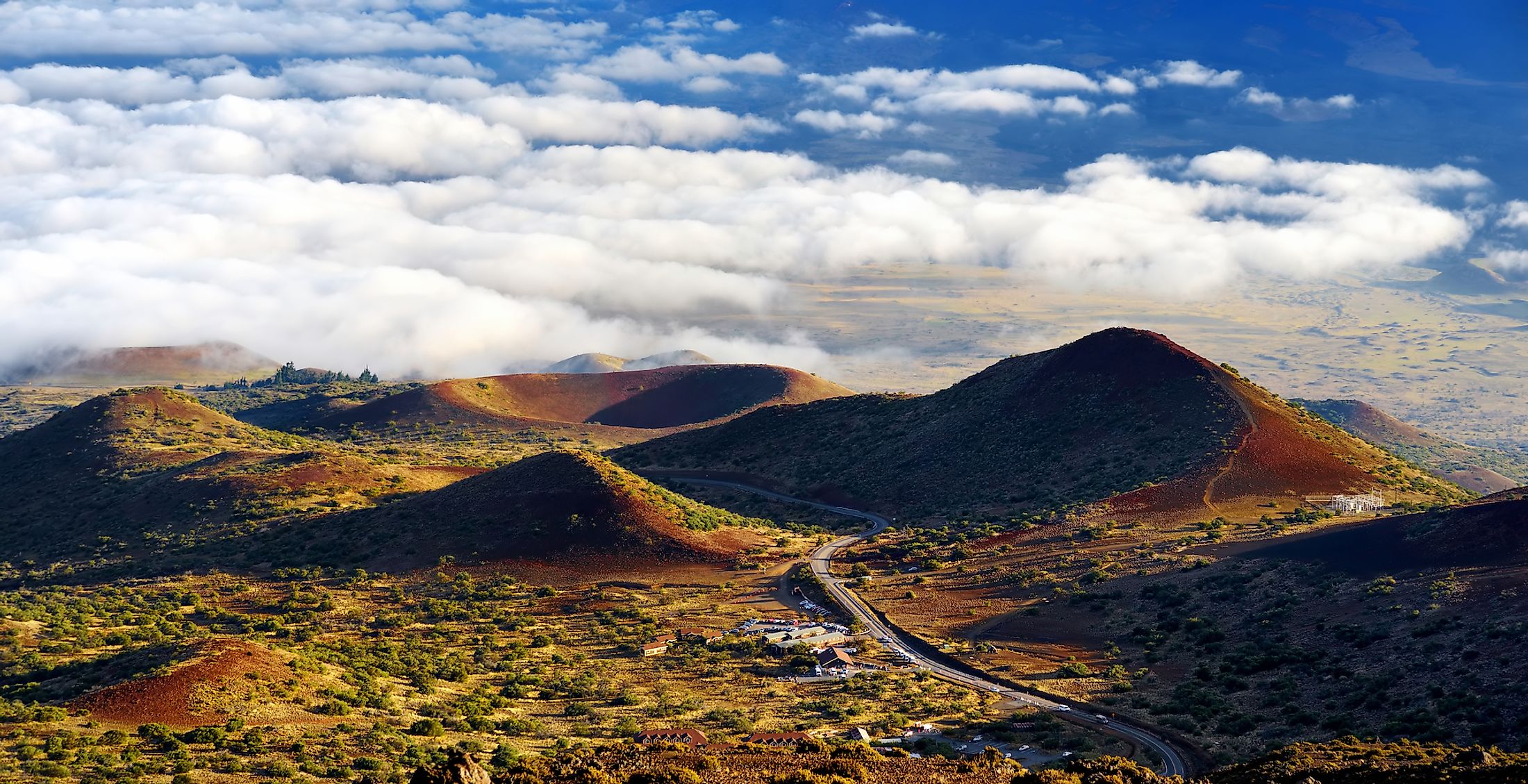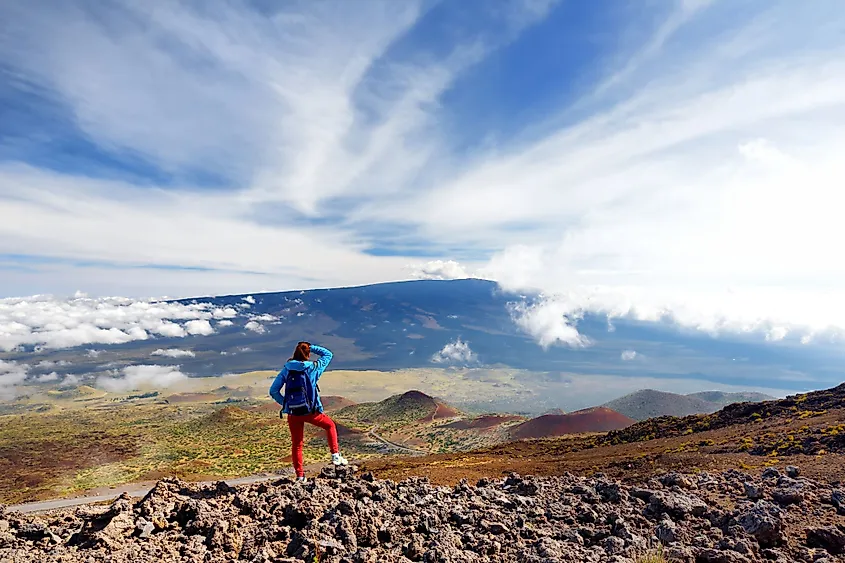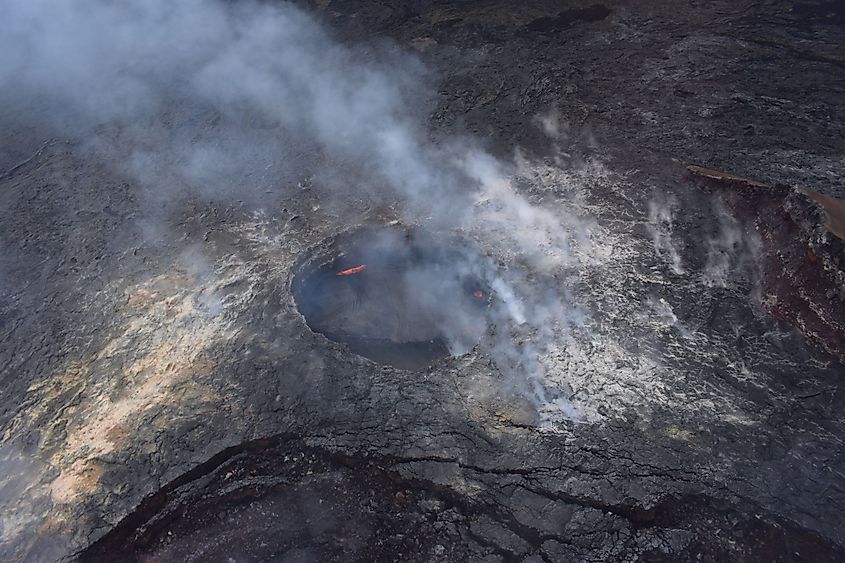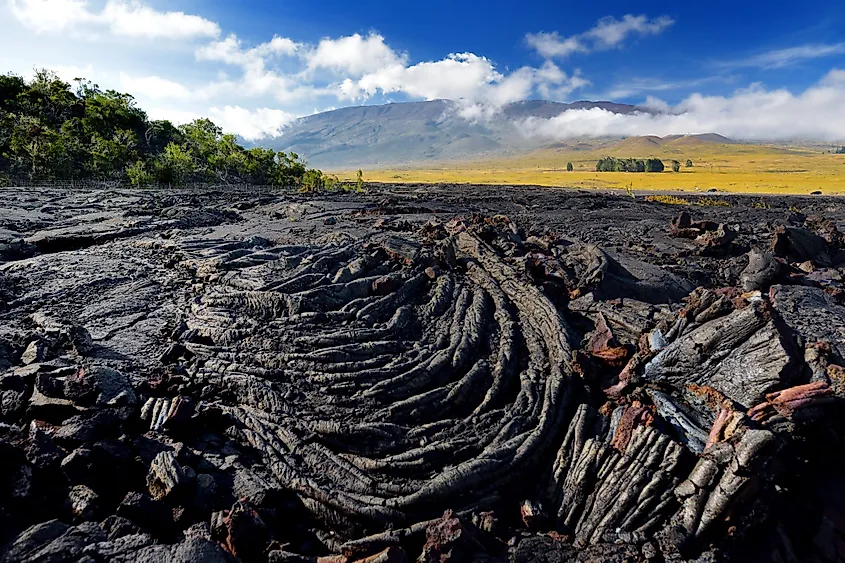
Mauna Loa
Mauna Loa is one of the five active shield volcanoes in the Hawaiian Islands that form the Big Island of Hawai'i. This giant shield volcano is situated in the south-central portion of the Big Island of Hawai'i in the US State of Hawaii. It forms the principal attraction of the Hawaii Volcanoes National Park. Mauna Loa is considered the world's largest active subaerial volcano that rises to 4,169m and has an estimated volume of 75,000 cubic kilometers. Mauna Loa is surrounded by the Kilauea volcano in the east, the Hualalai volcano in the northwest, and Mauna Kea in the northeast. Mauna Kea, which is considered the highest point in Hawaii, has an elevation of about 38m more than Mauna Loa.
About Mauna Loa

The name "Mauna Loa" is a Hawaiian term that means "Long Mountain" and refers to the massive size and huge lava flow of this largest single mountain mass. Occupying a land area of 5,271 sq. km, Mauna Loa covers about 51% of the area of the Island of Hawai'i, and the weight of this mammoth mountain has depressed the ocean's crust for about 8km. The dome of Mauna Loa has a length of 120km and a maximum width of 103km. This shield volcano contains about 65,000 to 80,000 cubic kilometers of solid rock and takes the shape of an extensive, broad dome that extends down to the floor of the Pacific Ocean. The summit of Mauna Loa features three pit craters that overlap and are arranged in a northeast to southwest direction. The summit caldera of Mauna Loa, referred to as "Mokuaweoweo," covers an area of about 15 sq. km and reaches a maximum depth of 180m. The two small pit craters Lua Hou and Lua Hohonu, are located in the southwestern part of Mokuaweoweo. In addition to this, the summit also serves as the focal point of Mauna Loa's two principal rift zones. The first rift extends for 60km in the southwest direction from the caldera, reaching more than 40km underwater, and is considered active throughout most of its length. The second rift that extends in the northeast direction towards the large city of Hilo is deemed to be active for just the first 20km of its length.
According to the Köppen climate classification, Mauna Loa experiences a tropical climate with relatively warm temperatures at the lower elevations and year-round cold temperatures at the higher elevations. Mauna Loa also strongly affects the local climate of the Hawaiian Islands. The volcano's eastern or the windward side receives higher rainfall than the western or the leeward side. With a topographic prominence of 2,158m, Mauna Loa is often snowcapped during the winter months and receives an average of 9.4cm of snowfall per year.
Geology Of Mauna Loa

Similar to all the other Hawaiian volcanoes, Mauna Loa was formed when the Pacific Plate moved over the Hawai’i hotspot that is situated in the mantle. This tectonic movement also led to the formation of a 6,000km long Hawaiian-Emperor seamount chain about 70 million years ago. Mauna Loa is considered to be the Hawaiian-Emperor seamount chain’s third-youngest volcano and the second youngest among the five active volcanoes in the Hawaiian Islands. Geologists estimate that Mauna Loa is about 1 million to 700,000 years of age and has only risen above the sea level about 400,000 years ago.
Eruptive History of Mauna Loa

It has been recorded that the Mauna Loa volcano had erupted about 33 times from the year 1843 till date, averaging once every 6 years. Studies have also revealed that the Mauna Loa shield volcano consists of very fluid lava flows and due to the extremely low viscosity of the lava, the eruptions from the Mauna Loa volcano occur at high speed and the lava is capable of traveling long distances. Most of these eruptions occur at the summit caldera and then migrate to either of the two rift zones. The northwestern flank of Mauna Loa has also served as a source of a few eruptions besides the summit and the two rift zones.
The 1942 Mount Loa eruption was one of the most interesting ones. The surprise Japanese attack on Pearl Harbor led to the entry of the United States into the Second World War. However, the volcanic eruption of Mauna Loa during this wartime created a unique challenge for the United States. Even though the US government ordered a ‘gag order’ on the local media to contain the spread of the news, they, however, failed in their attempts to control the eruption. Fearing the destruction of Ola’a flume, which served as a primary water source for Mountain View, the US Army Airforce decided to drop bombs on the island to redirect the flow of magma. The bombs had minimal effect on the magma flow and eventually, the flow ceased by itself. The 1950 volcanic eruption which originated from the southwestern rift zone emitted 376 million cubic meters of lava and lasted for 23 days. The latest volcanic eruption that took place in 1984 produced a channelized lava flow that reached within 6km of the city of Hilo. The course of this lava flow was however interrupted by the two natural levees that diverted the lava flows. Since this last eruption, the Mauna Loa volcano had remained inactive for several years.
Human History
Mauna Loa and the four other volcanic peaks of the island were regarded as 'sacred' by the ancient Hawaiian people. As per the Hawaiian mythology, Pele, the goddess of volcanoes, lives in a Halemaumau pit crater of the Kilauea volcano. As per the religious beliefs, all volcanic activities on the Hawaiian island are associated with Pele. Since the Ancient Hawaiians considered Kilauea to be an offshoot of Mauna Loa, all the mythologies that are currently associated with Kilauea were initially directed at Mauna Loa. In February 1794, the Scottish botanist Archibald Menzies became the first European to reach the summit of Mauna Loa. On January 29, 1834, the Scottish botanist David Douglas reached the summit caldera using the historic Ainapo Trail.











